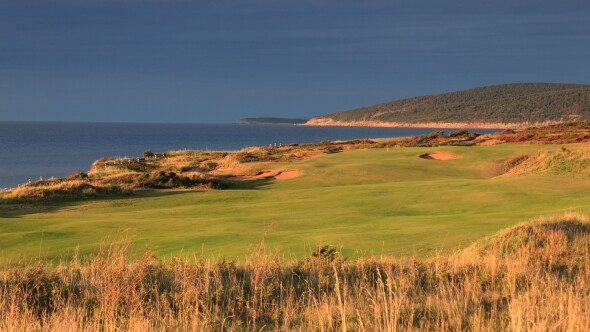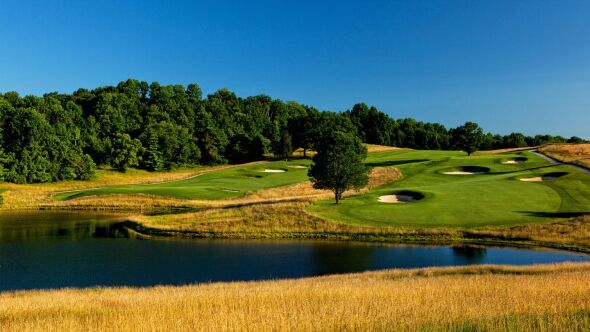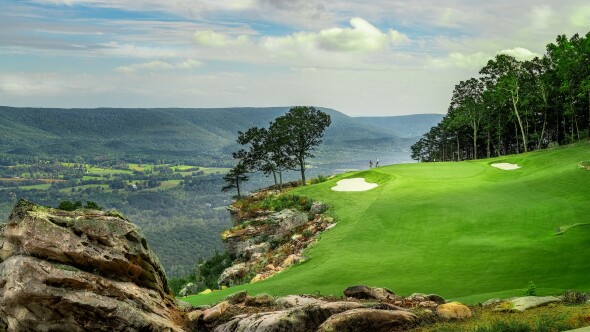We’re on the 12th tee of the William J. Devine Golf Course at Franklin Park in Boston and course designer Mark Mungeam is contemplating the next step in his work.
No, he’s not the original designer of the course. Franklin Park dates to 1896, back when it followed Van Cortlandt Park in the Bronx, N.Y. as only the country’s second municipally owned and operated layout. Mungeam has been hired by the city to renovate and restore the golf course – along with its nearby sibling, George Wright Golf Course. Both municipal tracts were desperately in need of work when Mungeam came on board a decade ago. Now they are sparkling examples of classical design. And both are seeing lots of golfers lined up to play.
Still, there’s more work to be done. Mungeam, 57 years old and a native of central Massachusetts, is used to it. As someone who has worked hard to establish himself in a highly competitive trade, patience comes to him now by second nature. After securing his undergraduate degree in civil & environmental engineering from Worcester Polytechnic Institute in 1983, he worked in golf construction before landing a job as a draftsman and apprentice for New England golf design stalwart Geoffrey Cornish.
More than two decades later, Mungeam, a member of the American Society of Golf Course Architects, headed off on his own with a portfolio that included primary credit for half a dozen courses, including The Golf Cub at Oxford Greens in Connecticut, and LeBaron Hills Country Club in Massachusetts. Among several dozen renovations and restorations he had, one stood out above all: Olympia Fields Country Club in Illinois, which Mungeam prepped for the 1997 U.S. Senior Open, the 2003 U.S. Open and the 2015 U.S. Amateur. A good measure of his personality is that Mungeam spent that Open not in the press room touting his work but with rake in hand working bunkers and the rough as a grounds crew volunteer.
Persistence and commitment go along way in this business. The reclamations of William J. Devine Golf Course at Franklin Park and George Wright have been piecemeal projects. That means there’s always more to be done. And so he stands at the foot of the uphill 12th, 404 yards long, its bunkerless fairway leading up to a perched green. No less a golf luminary than Robert Tyre "Bobby" Jones once extolled it as among his favorite par-4s anywhere.
It is a glorious par 4, climbing steadily, 40 feet from a tee set back in the woods, with a fairway pitched to the right and with a natural protuberance deep in the fairway landing area that further kicks shots away from the centerline. These are not features that anyone could ever build and get more properly placed than their perfectly natural feel allows for.
Credit for the design of Franklin Park is somewhat elusive in detail, though it certainly involves an early nine-hole redesign by Willie Campbell, who until his untimely death at the age of 38 in 1900 was pro nearby at The Country Club in Brookline. Donald Ross expanded the course to 18 holes in 1922, though it’s not clear which holes today are due to whom.
Franklin Park has yet a more distinguished design lineage. It occupies 112 acres of an eponymous 527-acre park that was designed by famed landscape architect Frederick Law Olmsted. In a succession of plans for the park drawn 1884-1891, Olmsted dedicated an open meadow and wooded hilltop as a focal point for the municipal reserve. The park tied into a vast Emerald Necklace of preserved and restored green space he designed to encircle the city of Boston.
While golf at Franklin Park arose gently on top of existing terrain, George Wright Golf Course had to be hammered into place. Ross’ 1928 routing for the site anticipated a private club for the 156-acre site in Hyde Park/West Roxbury section of town. Funding efforts dissolved, and it took a decade for the course to be built and opened, most of it courtesy of the federal Works Progress Administration.
At $1 million it was the country’s most expensive public golf undertaking. Blasting through ledge and clearing wetlands required up to 1,000 laborers. Ross’ former longtime civil engineer and draftsman, Walter Irving Johnson, oversaw the work in his new capacity as engineer for the Boston Metropolitan District Commission. A three-mile-long stonewall, 3-6 feet high, encircled the property. The coup de grace to the ambitious golf course was a Norman-style chateau clubhouse with 335 lockers and a vaulted ceiling main hall that became a popular venue for private gala events.

Both courses flourished in reputation and a full tee sheet until urban woes of the 1960s and 1970s took their toll. Parks Department budgets and maintenance left the courses derelict, and the simultaneous spread of neighborhood unrest and decline made the courses anathema less as destinations. Nor did the courses benefit from efforts at private management. On the contrary, they further deteriorated.
Franklin Park was down to four holes in the early 1980s, maintained by volunteers. Its resurgence was led by Parks Department Commissioner Bob McCoy and Mayor Raymond Flynn, who leased the courses to the Massachusetts Golf Association in 1982. Course manager Bill Flynn oversaw basic restoration, including a revival of Franklin Park’s full 18.
Boston Mayor Tom Menino, who served 1993-2004, oversaw a revitalization of the city under the rubric of "Beantown to Greentown" that included a newfound focus on the heralded Emerald Necklace. The city took back control of its golf courses and invested money steadily in everything from drainage to cart paths, greens and tee expansion, tree work and clubhouse renovation.

Mungeam, who won the city’s bid for design services a decade ago, has since been working closely with superintendents Russell Heller at Franklin Park and Len Curtin at George Wright. With maintenance budgets hovering around $600,000 each, there’s not a lot of wiggle room at either course to divert staff labor from everyday tasks to major improvement. But the city has been accommodating in using profits generated from day-to-day operations – something only possible now that play at each course has jumped about 25 percent in the last five years.
George Wright, a par 70 stretching to 6,506 yards, is the more demanding of the two courses thanks to land that offers more elevation and perched greens. Franklin park has more of a meadow feel, with smaller greens and more precision needed but less penalty for a wayward shot. Both layouts are easily walkable. One measure of the revived golf is that the courses just held the 2018 Massachusetts Amateur Championship – the first time this prestigious event has gone public.
Mungeam, decidedly a traditionalist, would prefer to minimize cart paths altogether, though he realizes their role in contributing to the bottom line – especially because they allow golf to be played after heavy rains. His classical sensibility is evident in his golf bag, which carries a pair of 1970s-era persimmon fairway woods. It’s also a bag he carries rather than strapping onto a pull cart.
And so he stands at the 12th tee of Franklin Park, eyeing a spot right of the fairway where the ground gives way to a natural hollow that’s covered up by trees. He’s drawing up plans to reveal yet more of the native terrain. It’s a never-ending five-year plan to make Boston public golf better.












I moved to Boston when both courses were in the worst shape of their existence. I have noticed and enjoyed the improvements. Can't wait for the snows to disappear and my finger to recover. Should happen about the same time right around April 1.
Bravo to everyone involved. Here is a snap of can you guess which hole at Franklin Park. https://www.instagram.com/p/BLuiGMSD8NC/
We've had the pleasure working with Mark, Len, and Russ on some of the renovation work. Any serious golfer within driving distance of Boston should check out these two classic courses. Remarkable golf in an urban setting.
The George Wright course is "easily walkable"? I have to differ. I found it to be a much harder walk than Bethpage Black for example. The elevations are severe and frequent at George Wright. I'm not saying it is unwalkable but it certainly isn't an easy walk.